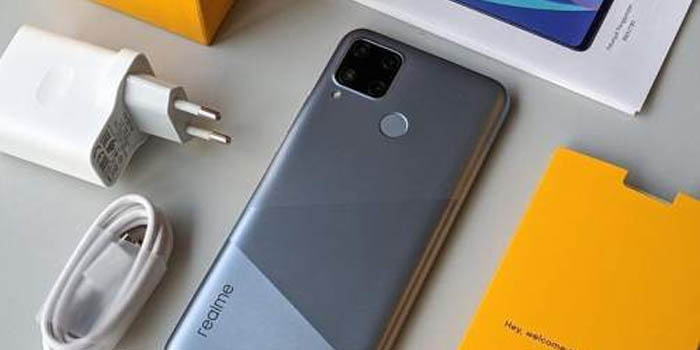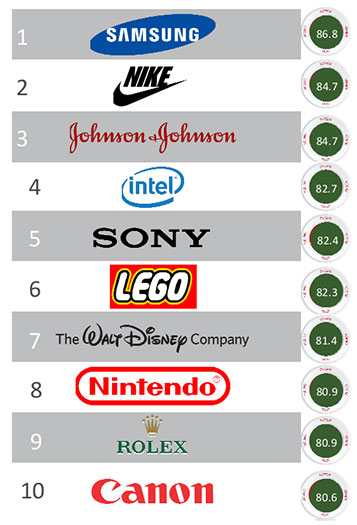Search result

Recently, Realme released two smartphones as part of its budget series - C12 and C15. This smartphone aims to offer users with phones that can last long with a single charge, which they do. They also fill the widening pricing gap between the Realme's C-series and its number series. Realme's new C1x models, including the C11, however, overlap the pricing of C3 and Narzo somewhere. In this article, we will look at the Realme C15, but more importantly, explore Realme's budget series to see which phones are worth buying.
The Realme C15 is a budget-friendly smartphone from Realme, price starting at the Rs. 10,000. Just like the old Realme C12, the C15 isn't meant to replace any existing model but rather compliments these. The device is virtually the same as C12 in terms of design and specs. However, C15 comes with 18W fast charging that justifies its higher price as compared to C12 to some extent.
Another significant difference between c12 and C15 is the number of cameras. The Realme C12 has three cameras in total, whereas the Realme C15 has three cameras. You get the same 13-megapixel primary camera, but also get an 8-megapixel ultra-wide-angle camera lens, a monochrome, and a retro camera. The Realme C15 skips the dedicated macro camera, which is present on the Realme C12. The C15 also gets an 8-megapixel selfie camera instead of 5 megapixels.
The Realme C and Realme C2 are still listed on the company's official website, although you can't buy these easily. The Realme C2( Review) is more than a year old, but at Rs. 6,999 (2GB + 32GB), it's still not bad if you are just looking for a simple Andriod phone. However, the 3GB and 32GB variants available at Rs. 7,499 doesn't make much sense with the arrival of C11 that offers a bigger 5,000mAh battery and a new SoC. However, in our experience, the 2GB of RAM felt inadequate and lack performance in general. The Realme C12 has a bigger battery and a fingerprint scanner but has relatively weaker Helio C35 Soc. The top-end variant of the Realme C15 with 4GB RAM and 64GB internal storage at Rs. 10,999 seems like a difficult-to-sell device, as for extra Rs.1,00 you can get the Nazro 10, which is way better than C12 or C15.

Who hasn't heard about TikTok? It is one the most popular streaming apps right now. Its parent's company - a Chinese IT firm is planning to take a step into the smartphone manufacturing industry as well. ByteDance, whose $75 Billion valuation ranks it one of the world's biggest start-up plans to launch a phone pre-loaded with its own apps - which include newsfeeds, video and gaming apps to reach out more global audience. This move is seen by many as an initiative by Chinese companies to rely on their own services, software, and hardware after the US ban. ByteDance is one of very few companies from china who has global audience in Asia and west, other than its home country.
Earlier than this, Amazon has tried similar effort but it was pulled a year after launch due to its disaster failure. Analysts predict ByteDance phone could have a similar outcome. Analyst Jia Mo said, there is basically no space for them in the mass market. They lack experience and advantage in supply chain, in channels, so their likelihood of being successful is very low, he further added. If they target only the niche market, may be they have a chance by attracting niche customer groups through certain pre-installed software.
Bytedance's own international expansion has helped the company to acquire its lip-syncing Musical.ly app in 2017. But despite racking up huge number of downloads- it was fined by the Federal trade commission for illegally collecting personal information from users younger than 18 years. Wang Xi, research manager said that may be they could have a chance if they offer something new and at lower price. He said, So if they really will go down this path, I think they will probably let hardware lose money in the beginning and try to make up through their service later.

As you probably know already, the Samsung Galaxy Note 7 is dead and chances of the smartphone ever resurfacing are almost none. However, Samsung would like to keep their customers from going elsewhere and that is exactly why they are offering $100 to all Note 7 customers who are willing to switch over to another Samsung smartphone, rather than leaving the brand completely or asking for a full refund. The extra $100 will be given to the customer via bill credit. Although this incentive is only available to the customers in the US at the moment, Samsung is expected to extend similar offers to other regions as well.
Here's the official statement by Samsung, "As a sign of our appreciation for your patience and loyalty, we are offering up to a $100 bill credit from select carrier or retail outlets if you exchange your Galaxy Note 7 for another Samsung smartphone, less any incentive credits already received."
Just in case you want nothing to do with Samsung smartphones for a while, most retailers and carriers will give you your money back, along with a $25 bonus. If you plan to switch to a different brand, you will still get a $25 bonus from most of them. Please note that if you had already exchanged your Note 7 when the first recall was initiated, the $25 bonus which you received then will be subtracted in all three scenarios.
Saikat Kar (tech-enthusiast)

Ever since the Note 7 disaster, reports and surveys have been rampant, as well as conflicting. Just the other day, we were hearing about IDC's report which stated that roughly half of the Note 7 owners may switch over to the fruity side (read Apple iPhone 7), while today, we have a report from ReportLinker that says otherwise.

This particular survey was conducted on 500 smartphone users in the US, over the internet. While a majority of the customers (60% approx.) felt that Samsung did not handle the Note 7 recall episode well enough, about 86% of the survey population stated that they would still consider Samsung smartphones the next time they decide to buy a new phone.

In fact, 84% of the people voted that they do not feel that their smartphone poses any kind of risk to them. Provided that Samsung manages to deliver a product that we had come to expect from the company before the Note 7, the Galaxy S8 seems all ready to lift Samsung up and out of the ditch which the Note 7 landed it in.
Saikat Kar (tech-enthusiast)

A recent report based on a survey conducted by The Reputation Institute suggests that Samsung is the most trusted brand for teenagers and anyone else who was born in or after the year 2000. Considering the fact that no other smartphone manufacturer made it to the list apart from Sony, the report is an indication of the amount of trust that people put in the Korean manufacturer's phones. Even though Sony did make it to the list, we are inclined to believe that it is more due to their PlayStation line of products than their smartphones.

This survey and its results are based on the quality of the manufactured products, employee treatment, innovation in the specific line of business and the conduct of the company as a corporate member of the United States. In all their studies across the country on millennials (people born on or after the year 2000), The Reputation Institute found that while shopping, most of them had an affinity towards the products that were made by Samsung. Samsung is also one of the most successful companies in the US as a whole and this result just unveils one of the reasons as to why the MNC is so successful here.
Author: Saikat Kar (tech-enthusiast)
A recent report by Korea Economic Daily states that The Murata Manufacturing Company will be supplying Samsung with a percentage of the batteries which the OEM will need to power the upcoming Galaxy S8. The Japanese company came into limelight in 2016, when it gained control over Sony's battery manufacturing unit. If this report is true, it puts to rest the rumor that LG will be supplying the Galaxy S8 with a percentage of its batteries.
However, the amount of batteries which will (reportedly) be supplied by Murata is not really significant (2% - 8%). Samsung's own battery division (Samsung SDI) will be supplying the S8 with most of its battery packs. Incidentally, Samsung SDI was also responsible for making the first batch of faulty batteries which caused the Galaxy Note 7 to explode in the first place. The production process has since been revamped and improved upon significantly with an investment of $128 million, according to Samsung. Let's just hope that it was enough to prevent any future disasters.
Saikat Kar (tech-enthusiast)

Samsung is the global leader when it comes to smartphone sales and market share, but that doesn't mean it's the leader everywhere. Being the most populated and prospective nation in the world, China is now one of the biggest markets for smartphones in the entire world as well. In spite of seeming like the perfect match for each other, Samsung's hold over the local market in China has been reduced to a mere 3% at the end of Q2 2017; the lowest for the company in any other nation where it has a significant presence.
If you are wondering why it is so, there are two main factors at play here. Firstly, the political relationship between South Korea and China is not going very well at the moment. This has resulted in a number of customers rejecting Korea-made products In favor of products from local manufacturers like Xiaomi, Vivo, Oppo, Huawei and the like. Secondly, the competition from the local manufacturers is too steep for Samsung to match up with them under the current situation. In fact, Apple isn't doing too well in the country either as their share in the Chinese market dropped from 8.5% to 8.2% in just a year. Nevertheless, the American company is still doing a lot better than Samsung, given that their market dropped from 7% to just 3% at the end of Q2 2017 in a quarter-on-quarter comparison with 2016.
Saikat Kar (tech-enthusiast)

Samsung had been losing ground in India for a couple of years now, but things got particularly serious when Samsung lost the number one spot to Xiaomi two quarters ago; a feat that had not been achieved for years in the country. However, instead of conceding defeat, Samsung released some new smartphones in the budget and mid-range category (the Galaxy J series in particular) to resurface as the country's leading smartphone vendor, which has clearly worked because Samsung is back on top after just two quarters.
Do keep in mind that in spite of improving the sales numbers, the lead is a slim one as Xiaomi still claimed an impressive 28% of the total smartphone sales in in Q2 2018, and Samsung only managed to edge the Chinese OEM out by a 1% lead, by claiming 29% of the total smartphone sales in India last quarter. As you can see in the image, Vivo, Oppo and Huawei's Honor series held the third, fourth and fifth position respectively, although the difference in between the top two OEMs and the rest is huge!
Source: Counterpoint
Saikat Kar

Eager stock market analysts have been quick to pour over the latest Q4 2015 SEC filings from Alphabet, Google's parent company. The market responded quickly with both the Class A and Class C stock trading up to a $750-780 price range. This makes Alphabet not just good at letters, but also with numbers as it now eclipses Apple's market capitalisation to be the most valuable company in the world.
In fairness, Apple's earnings were showing signs of hitting a plateau with its iPads not selling as many units as they once did as interest moves more to the phablet-size phone market and away from larger tablets which are less convenient on the run. Investors in Alphabet were quick to double down on their positions and others buying into Alphabet for the first time on the positive trading news.
Alphabet revenues year-over-year rose 24% compared to 12% the previous year. The source of the accelerated revenue growth has been primarily from advertising. The picture is a mixed one through with ad clicks rising by 31%, but the cost per click for adverts falling by 13%. Overall, Alphabet still came out ahead.
The company also noted on a recent call with investors that Gmail, its email service, now has more than 1 billion active users each month. That's active users, not open accounts. Only What's App and Facebook can say the same.

Not unlike the fabled Galaxy X and its foldable display, the in-screen fingerprint scanner never really arrived on any Samsung device, in spite of there being no shortage of rumors that hinted Samsung will incorporate it in the Galaxy S8 or the Note 8. As it turns out, even the upcoming Galaxy S9 will most likely go with a traditional fingerprint scanner at the back, albeit in a better place! However, the focus of this news is the fact that it's a Chinese company named Vivo that has beaten the mighty Korean giant and the all-powerful Apple in getting Synaptics' inside-the-display fingerprint scanner inside one of its smartphones.
Vivo is no joke though, because the company is one of the leading smartphone companies in its home country and in India. Unfortunately, this also means that the western world might not see this smartphone ever make its way onto the US shores. In the words of the source, which is Patrick Moorhead aka @PatrickMoorhead on Twitter,

"Here are some pics @anshelsag and I took of the Vivo smartphone with the Synaptics in-display fingerprint reader. The CMOS image sensor is .7mm thick and reads the fingerprint right through the OLED display. The experience was faster than I expected."
You can check out the photos above.
Sakat Kar (tech-enthusiast)

Today, Lenovo announced that its acquisition of Motorola from Google is complete. The deal cost the Chinese company $2.91 billion and was announced in late January. Motorola remains headquartered in Chicago and it's brand is intact, but it's now a "Lenovo company".
Lenovo will operate Motorola as a wholly-owned subsidiary. It owns the brand and the company's portfolio, including current products like the Moto X 2014, Moto G 2014 and the Moto 360.
"Today we achieved a historic milestone for Lenovo and for Motorola and together we are ready to compete, grow and win in the global smartphone market. By building a strong number three and a credible challenger to the top two in smartphones, we will give the market something it has needed: choice, competition and a new spark of innovation," - said Yang Yuanqing, chairman and CEO, Lenovo.
© 2023 YouMobile Inc. All rights reserved






